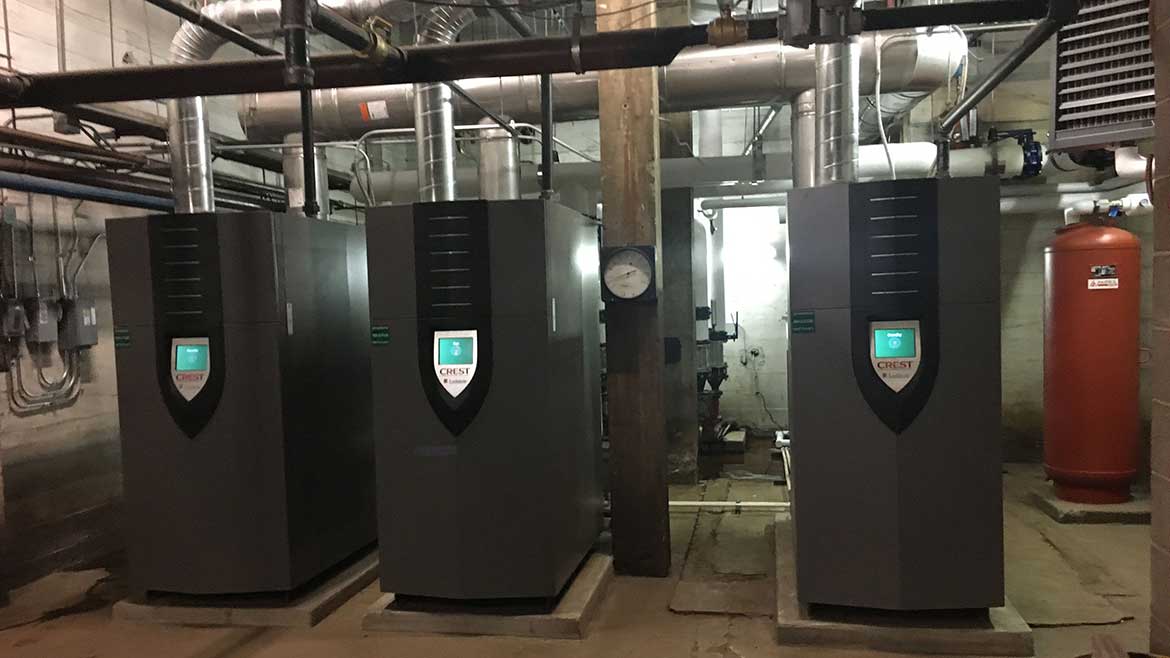Decarbonization is the hottest topic in the boiler industry at the moment — affecting the development of new technologies, retrofit and new build specifications and more. Throughout the country, regulations that require higher efficiency levels are spreading, and so are phased-in penalties (taxes) for not reaching aggressive emissions goals. The industry is shifting its focus to ensure the next generation of boilers will help customers meet these challenges.
Under the federal Inflation Reduction Act (IRA), billions of dollars are now available to building owners and homeowners who make the switch to a high-efficiency or electric boiler. Investing in efficient technologies can come with a high up-front price tag for homeowners or facilities. These incentives will provide financial relief, encouraging a faster adoption of more sustainable boiler technology.
While some cities — including Seattle, Berkeley and New York City — have banned or attempted to ban gas-fired boilers in new buildings, other areas favor hybrid electric/gas or high efficiency gas systems as sustainable solutions. Across the board, the top priority for the industry today is finding a faster path to decarbonization and expediting the shift to more sustainable boiler technology.
Today’s electric boilers already reach high efficiencies and offer a variety of benefits in suitable applications. These include easier installation, faster startup/shutdown time and quieter operation. An electric boiler installed indoors transfers 100% of the electrical energy into heat, with no stack or heat transfer losses. Electric boilers deliver this impressive efficiency even in cold weather — something that other technologies struggle to do.
Another clear-cut trend is the growing popularity of ultra-high efficiency gas boilers that outperform mid-level efficiency copper tube/cast iron gas boilers. For instance, some products offer higher efficiency in a smaller footprint than other types of gas boilers. These units can be piped both primary/secondary and full flow, which provides greater installation flexibility.

Lochinvar’s CREST condensing gas boilers with Hellcat combustion technology offer RealTime O2 Feedback, which displays correlated O2 and CO2 values that can be verified with hand-held analyzers. The unit’s RealTime O2 Trim, which includes Feed Forward, Feed Back, Commissioned Trim and Learned Trim, enables the unit to adapt to its environment. The control platform records the optimal settings so that as environmental conditions arise the combustion system adjusts automatically. Image courtesy of Lochinvar
Smart controls reduce emissions
CO2 emissions decrease when gas boiler efficiency rises, but reaching 99% or higher thermal efficiency is a daunting task. Today’s most innovative gas-fired boilers feature enhanced controls that use real-time data to help units operate more efficiently. These boilers modulate to provide the precise amount of output needed to satisfy demand, thus eliminating wasteful short cycling. Monitoring emissions in real time is now more important than ever.
Potential pitfalls in retrofits
While there’s growing pressure to install electric boilers in new construction in certain regions of the country, retrofitting buildings to electric heat comes with several challenges. One of the biggest challenges is that the cost of electricity varies widely from state to state. For example, in Washington (which has abundant hydropower), electricity costs just 11 cents per kWh. But in Massachusetts, that cost soars to 29 cents per kWh. In short, the cost to operate an electric boiler could be significantly higher than the operating cost of a gas unit.
It’s imperative for customers to know that switching from gas to electric can be complex and costly. Replacing a 4 million Btu boiler with an equivalent electric boiler requires massive amperage and an electrical infrastructure to support that amperage. When retrofitting or building, corporations have to decide how high of a priority decarbonization is for them. Since electric boilers are an investment that comes with a higher price tag, the choice to install them is often dependent on the mindset of an organization. Both engineers and contractors must be increasingly more cognizant of these complexities as they begin to specify and install more electric boilers.

Ross Brawner, product manager at Lochinvar.
Practicing what we preach
Sustainability in the boiler industry can begin long before a unit reaches the customer. At Lochinvar, our commitment to decarbonization starts in the factory. Our manufacturing facilities are more sustainable than ever — reducing energy usage from the beginning of a product’s lifetime
Lochinvar has implemented high and low firing stages in our glassing furnace, which reduces fuel consumption when units are not present. Motion-activated lighting is installed throughout the building, from the offices to the production floor, to reduce electrical use during the day in areas with less foot traffic. And we’ve upgraded existing equipment with new sheet metal laser cutters that use 30% less electricity.
This is a pressing issue for all manufacturers in our industry, and the government has begun to recognize this. The IRA includes grants and loans that are aimed toward manufacturers to incentivize clean energy manufacturing. These are beneficial for the entire industry as capital investments are necessary to transition production lines or create new products and purchase new equipment.
Persistent push for electrification
There are now significant financial incentives and rebates for installing electric boilers and heat pumps in new buildings. Even without the financial motivation, switching is already mandatory in dozens of cities across the U.S. However, a hybrid solution that uses both all-electric and ultra-high-efficiency gas boilers can be an extremely cost-effective and sustainable strategy in many states.
It’s imperative for customers to know that switching from gas to electric can be complex and costly. Replacing a 4 million Btu boiler with an equivalent electric boiler requires massive amperage and an electrical infrastructure to support that amperage.
Customers across the country require diverse products and solutions to reach their overall goals. One thing is certain: sustainability will remain a top priority in the boiler industry for the foreseeable future. As customers’ mindsets and government regulations continue to change, the industry must rise to meet the challenge.




